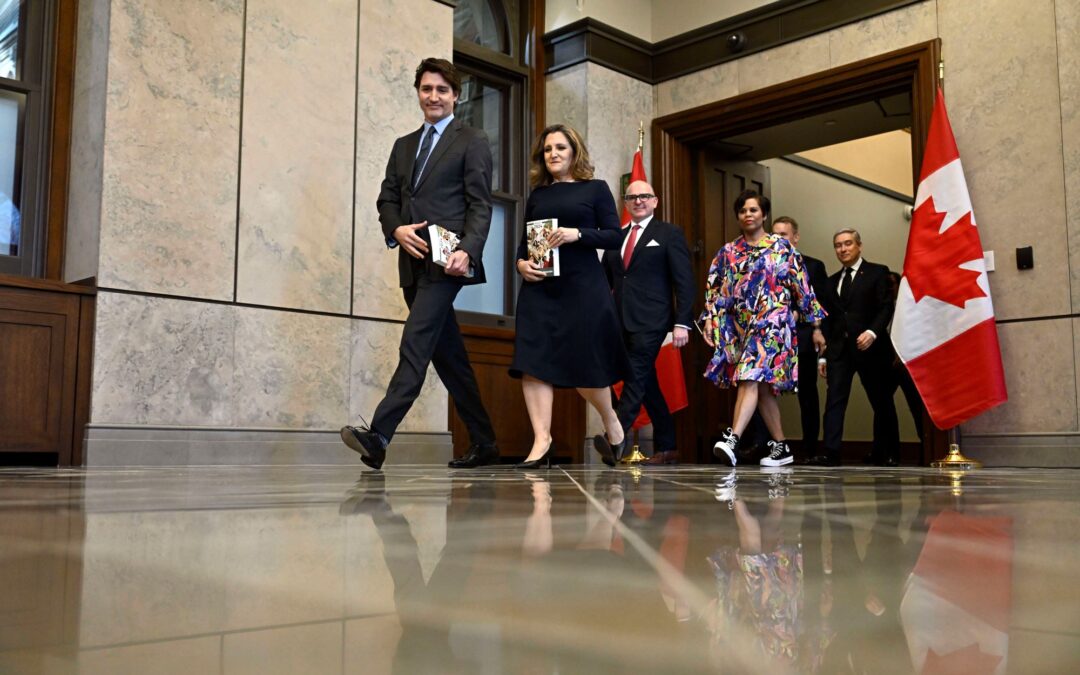Crafting a successful pre-budget submission in today’s political climate
What goes into a good budget submission?
Days after the 2024 Budget Bill was passed into law, the House of Commons Standing Committee on Finance (FINA) has issued their yearly call for pre-budget briefs from stakeholders. The submission deadline is August 2, 2024.
If you are thinking about advancing a proposal for Budget 2025, the FINA pre-budget consultation is the starting gun on what will be an important budget cycle. Not only will this be the last federal budget of the 44th Parliament of Canada, but the ideas being proposed by stakeholders will influence the election platforms of each major political party in the 2025 election.
Think of this FINA study as a piggy bank of policy ideas that everyone is free to draw from.
Sometimes, the hardest part of budget advocacy is knowing what to ask for. Getting your internal stakeholders to winnow down their list of priorities can be a daunting task (especially in the middle of summer).
Here are some things to keep in mind when developing a pre-budget consultation submission:
Clearly define the problem or market failure that you are trying to address
To warrant inclusion in the federal budget, you need to clearly define a problem and demonstrate its urgency. What problem are you trying to solve? Why is this occurring? Why is this a problem that the federal government can or should solve? Why does this need to be dealt with now?
For an effective advocacy campaign, you need to be able to demonstrate that this problem impacts a large number of Canadians and should be prioritized over the thousands of other submissions. If you can’t do this, you are going to have a difficult time convincing policymakers to consider your proposal.
Some examples of good problem statements are:
- Home ownership is unaffordable for 80% of Canadians under the age of 45.
- One in three Canadian kids go to school every morning having not eaten breakfast.
- Remote and northern communities do not have enough resources to fight the increasing frequency of wildfires.
You can follow up these problem statements with a discussion of consequences, urgency, and why it is a collective concern for the entire country. For example:
- One in three Canadian kids go to school every morning having not eaten breakfast. Childhood hunger has been demonstrated to have lifelong impacts on the academic attainment, socialization and productivity of those kids when they become adults. Since the beginning of the pandemic, the number of kids going hungry each morning has increased by 35% nationally.
Paint a picture of the desired outcome
Now that you have established the problem, what is the end state that you are working toward?
Consider this carefully. Are you trying to solve a problem, or simply mitigate it? Are you arguing for more resources to be directed toward an uncertain outcome, or can you clearly articulate what you are trying to accomplish? An example of a clear desired outcome would be:
- Every Canadian family earning the median household income can afford a two-bedroom home in their community by 2028.
Defining the outcome will help you better engineer a more precise solution.
Propose specific solutions
Too often, people approach government to highlight a problem or desired solution without a suggestion on how to deal with it. The problems facing Canada are generally well-understood, while the solutions to those problems are more obscure.
A concise, financially and politically realistic policy proposal has a much better chance of being considered than a vague invitation for the government to solve your problem.
Include information such who would administer the policy, what it would cost, the desired timeframe and the preferred policy mechanism. Some useful resources to consider include:
Propose the right tool
Traditionally, a budget document is full of spending priorities – and that hasn’t changed. However, the budget has also become a governing agenda, signalling not only what to fund and cut, but a litany of “non-budgetary measures,” announcing consultations, legislative changes and thematic signalling for future initiatives. The federal government has a variety of policy tools available to them, and you should consider which one is most appropriate to facilitate your desired outcome. They include, but are not limited to:
- Convening – The Government of Canada can bring together experts, industry participants and other levels of government to meet and move toward a common goal. This could come in the form of a roundtable, public consultation or a Federal, Provincial and Territorial meeting on a particular subject.
- Public campaigns – Using government announcements or advertising to persuade people or organizations to behave a certain way.
- Granting programs – The creation, or re-upping of a program that accepts applications and distributes funds to produce a preferred policy outcome.
- Inter-governmental transfers – Moving sums of money to other levels of government so that they can fund or an initiative.
- Procurement – The government purchases a good or service directly.
- Tax penalties – Using taxation powers to try and dissuade a specific type of activity or behaviour.
- Tax incentives – Using taxation powers to try and incent or de-risk a specific type of activity or behaviour.
- Orders in Council – Cabinet exercising their legal authority through existing legislative or constitutional powers.
- Legislative – The government can pass a bill or amend an existing piece of legislation that creates new laws or policies.
- Regulatory – The government creates, or amends regulations enabled by legislation that prohibit or require certain activities.
- Creation or enhancement of rights – Codifying a new “right” for citizens or organizations in law.
Consider the moment
Every budget has a theme, and every issue experiences the ebb and flow of political relevance. Four years ago, biomanufacturing and pandemic response were the urgent policy objectives. Three years ago, the transformation to a net zero economy dominated the agenda. Last year had a strong focus on the housing crisis and affordability.
Perfectly aligning your proposal with those major themes each year is not always possible, but it is a useful exercise when thinking about how to frame your ask.
Apply the political lens
2025 is an election year, and Budget 2025 is going to be used largely as a platform document for the governing Liberals.
For the Conservatives and NDP, they will be looking at budget proposals from stakeholders and considering those ideas for their own platforms.
In addition to thinking about the economic and practical dimensions of your proposal, you must consider the politics of what you are proposing. To whom does this proposal appeal to? Will it be popular with voters, or risk turning them off? Is this something a political party would want to put in the window, or quietly implement as a matter of housekeeping? Could this policy be used as a cudgel between political rivals, or will it be used as a shield to deflect criticism?
Build the parade
Now that you have a great budget proposal, you may want to find other organizations to co-sign or produce a letter of support. Consider the political relevance and credibility of your co-signers. An organization that represents thousands of people is a better co-signer than a small one. An organization that is known for their policy expertise in a relevant field is better than one that no one has heard of before.
However, beware of any digital advocacy strategy that amounts to an “spam campaign,” either through templated letters or form emails. What might have worked out of sheer novelty five years ago has aged quickly – and not well. A more constructive approach highlights the political capital behind an issue or cause.
Having a diverse set of institutional stakeholders back your proposal can be an effective way to get your policy prioritized.
Next steps
Now, the real work begins. You have to figure out how to get decision makers to pay attention to your budget proposal. Counsel has you covered.
Schedule a time to speak to our multi-partisan team who can help you every step of the way. Email us to arrange a time.
Alex MacDonald
Account Director
amacdonald@counselpa.com
Ben Parsons
Vice President
bparsons@counselpa.com



